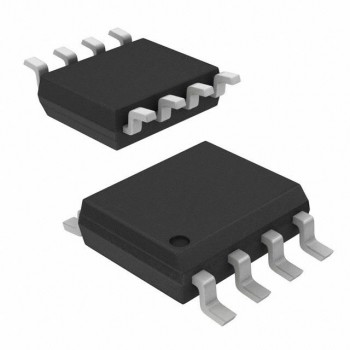Field-effect transistors (FETs) are fundamental building blocks in modern electronic devices. Their widespread use in various applications, such as microprocessors, amplifiers, and power management circuits, has necessitated a deeper understanding of their behavior and characteristics. In this popular science article, we will explore the static and dynamic characteristics of FETs, shedding light on the intriguing world of transistors and their practical implications.
1. Field-Effect Transistors – A Brief Overview
Field-effect transistors (FETs) are a type of transistor that relies on an electric field to modulate the conductivity of a semiconductor channel. FETs come in two major varieties: Junction Field-effect Transistors (JFETs) and Metal-Oxide-Semiconductor Field-effect Transistors (MOSFETs). The key difference between these two types lies in their gate terminal structure and the way the electric field is applied to control the current flow between the source and drain terminals.

2. Static Characteristics of FETs
Static characteristics are the properties of FETs when they are subject to a fixed bias voltage. Exploring these characteristics enables us to understand the transistor's performance under steady-state conditions. The main static characteristics of FETs include:
- Transfer Characteristics: This curve describes the relationship between the gate-to-source voltage (VGS) and the drain current (ID). Generally, it demonstrates how the channel's conductivity changes as the gate voltage varies, dictating the transistor's ON and OFF states.
- Output Characteristics: This curve represents the relationship between the drain-to-source voltage (VDS) and the drain current (ID) for different gate voltages. It provides crucial information about the FET's operation in various regions, such as the ohmic, saturation, and breakdown regions.
3. Dynamic Characteristics of FETs
Dynamic characteristics come into play when the input or bias voltages are time-varying. These characteristics are vital for comprehending the transistor's performance under varying inputs or switching conditions. The primary dynamic characteristics of FETs include:
- Switching Characteristics: Switching characteristics explain the behavior of FETs when transitioning between ON and OFF states or vice versa. Two crucial parameters define these characteristics: turn-on and turn-off times. The turn-on time represents the duration it takes for the transistor to transition from the OFF state to the ON state, while the turn-off time accounts for the time required for the transition from the ON state to the OFF state.
- Capacitance Characteristics: FETs exhibit internal capacitances due to their construction and the presence of insulating layers. The capacitance characteristics include the input capacitance (Ciss), output capacitance (Coss), and reverse transfer capacitance (Crss). These capacitances play a crucial role in determining the FET's high-frequency performance, dynamic power dissipation, and overall stability.
4. Analyzing FET Characteristics for Real-World Applications
Understanding both the static and dynamic characteristics of FETs is essential for selecting suitable transistors in various practical applications. Some examples include:
- Amplifiers: Suitable FETs for amplifiers exhibit low noise and distortion, moderate transconductance, and linearity in the transfer characteristics.
- Switches: FETs acting as switches should feature a fast turn-on and turn-off time, minimal ON resistance, and high breakdown voltage to ensure efficient and reliable operation.
- Power Management: For power management applications, FETs with low conduction and switching losses are preferable, as they contribute to improved energy efficiency and reduced heat dissipation.
Conclusion
Field-effect transistors have had a profound impact on electronics due to their versatility and efficient operation. By exploring the static and dynamic characteristics of FETs, we can better understand their behavior and make informed decisions about their application in various electronic systems. As we continue to push the limits of transistor technology, our understanding of FET characteristics will play a pivotal role in shaping the future of electronics and the world we live in.
FET related product recommendation:

